Long gone are the days when your marketing automation meant sending bulk emails to woo your potential customers. Today’s customers are more informed and, by extension, more demanding than ever. Businesses must now integrate customer behavior data from stores, apps, and ads to deliver hyper-relevant experiences to stand a chance against competitors.
Failure to do so means leaving money on the table at best and losing market to rivals at worst.
Take the case of Max Fashion India—a 500‑store value fashion chain. By replacing batch emails with MoEngage’s event-driven cart-abandonment flows, they used real-time behavior to trigger FOMO nudges and coupon codes at just the right moment. The result: a 25 % uplift in conversions and a 5 % increase in monthly incremental revenue.
But the impact didn’t stop there. By analyzing funnel drop-offs, behavior segments, and custom queries, Max was able to fine-tune messaging across SMS, push, WhatsApp, and in-app, including loyalty campaigns that successfully converted in-store shoppers into online customers. Now, 10 % of Max’s online traffic comes directly from the outbound campaigns.
These numbers reveal something more than just the revenue boost. They highlight how revenue quietly leaks when messages are late, siloed, or—worse—never reach the right shopper at all. And that is what makes marketing automation critical for retailers.
Over the last two-and-a-half decades, marketing automation has evolved from batch-and-blast email campaign tools to visual journey builders to AI-augmented platforms that trigger actions based on real-time events.
In essence, marketing automation now entails ingesting real‑time customer events, segmenting the audience, and triggering personalized messages across email, SMS, push notifications, paid social, and even POS receipts with zero manual list pulls.
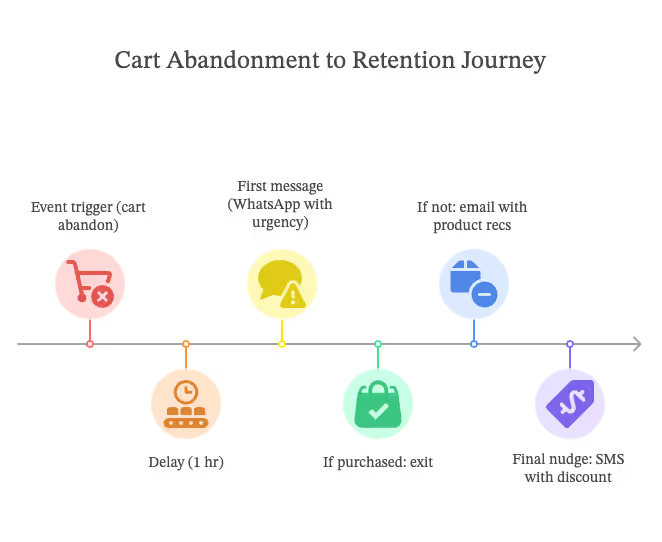
Who should care: Mid-sized retailers—those with 5 to 200 stores and/or $2 million plus in GMV—who are feeling friction as customer touchpoints multiply while being burdened by manual workflows. If your team is drowning in spreadsheets to segment lists while your competitors are deploying 1:1 WhatsApp offers, read on.
The Marketing Challenges Every Retailer Faces
Marketing automation today means using AI-powered tools to deliver the right message to the right customer at the right time—automatically. It connects data from across channels (web, app, store, WhatsApp, email) and uses real-time triggers, personalization, and predictive insights to run campaigns that scale without manual effort.
If your marketing feels fragmented, slow, and overly reliant on blanket discounts, you're not alone. Retailers and brands typically experience these frustrations:
- Disconnected customer experiences: Customers see conflicting offers because POS, e-commerce, and loyalty programs speak separate languages.
- Manual marketing grind: Marketers lose 20+ hours weekly exporting lists and tweaking campaigns rather than testing new strategies.
- Discount fatigue: Blanket offers erode margins and teach customers to wait for discounts instead of building genuine loyalty.
When your social ads are out of sync with your email campaigns, your loyalty program isn’t driving your repeat purchases, or your margins shrink every discount blast, it's time to elevate your marketing approach.
The good news?
Marketing automation delivers quick wins (like more sales from abandoned cart flows) while building the data foundation needed for more advanced personalization and seamless cross-channel campaigns powered by AI.
When done right, marketing automation directly addresses these pain points and delivers measurable payoffs:
- Revenue: Brands that nail real-time personalization drive 5–15 % more revenue across the full customer base.
- Efficiency: AI-driven automation frees up roughly 30 % of marketers’ time, allowing them to focus on strategy rather than manual tasks.
- Retention: Automated WhatsApp and email flows significantly reduce cart-abandonment and lift repeat purchases.
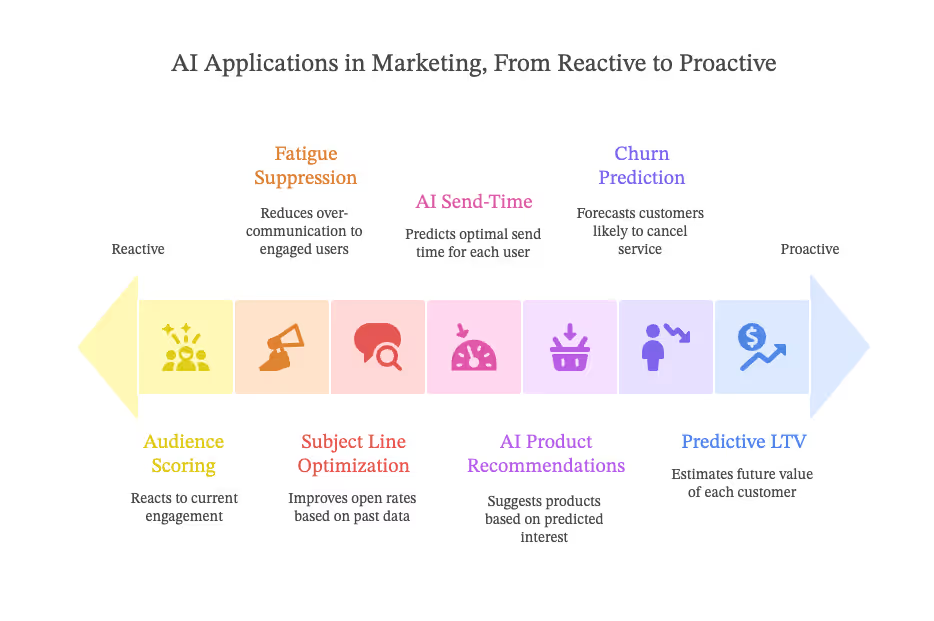
The reality check: If your idea of personalization stops at basic demographics like "Women, 18–35, Mumbai," you've already fallen behind competitors who are delivering individualized experiences.
When Marketing Automation Becomes Essential
It's not just about scale—it's about signal overload. When your team is juggling more campaigns, channels, and customer expectations than your current tools can handle, you've likely reached the tipping point where automation becomes essential.
Watch for these critical indicators:
- Multi-channel complexity: You're operating across 5+ channels—web, app, physical stores, SMS, WhatsApp, social media—and your campaigns feel disconnected.
- Scale challenges: You're managing 10,000+ customer profiles or 1,000+ SKUs, making manual segmentation virtually impossible.
- Performance gaps: Cart abandonment exceeds 70%, or repeat purchase rates fall below 25%, despite healthy website traffic.
- Resource drain: Your marketing team spends 20+ hours weekly on manual tasks like pulling lists and scheduling campaigns instead of strategy and optimization.
- System limitations: Major initiatives like flash sales, international expansion, or loyalty program overhauls expose the weaknesses in your current email service provider.
These aren't just warning signs—they're clear signals that you've outgrown basic email tools and need a sophisticated, journey-driven platform built for speed, scale, and personalization.
How to Evaluate Marketing Automation Tools
With dozens of marketing automation platforms claiming to solve your personalization challenges, choosing the right one can feel overwhelming. The key is moving beyond flashy demos and vendor promises to evaluate platforms against criteria that matter for your business growth and operational efficiency.
Use this framework to cut through the marketing noise and assess which platform will truly deliver on your automation goals:
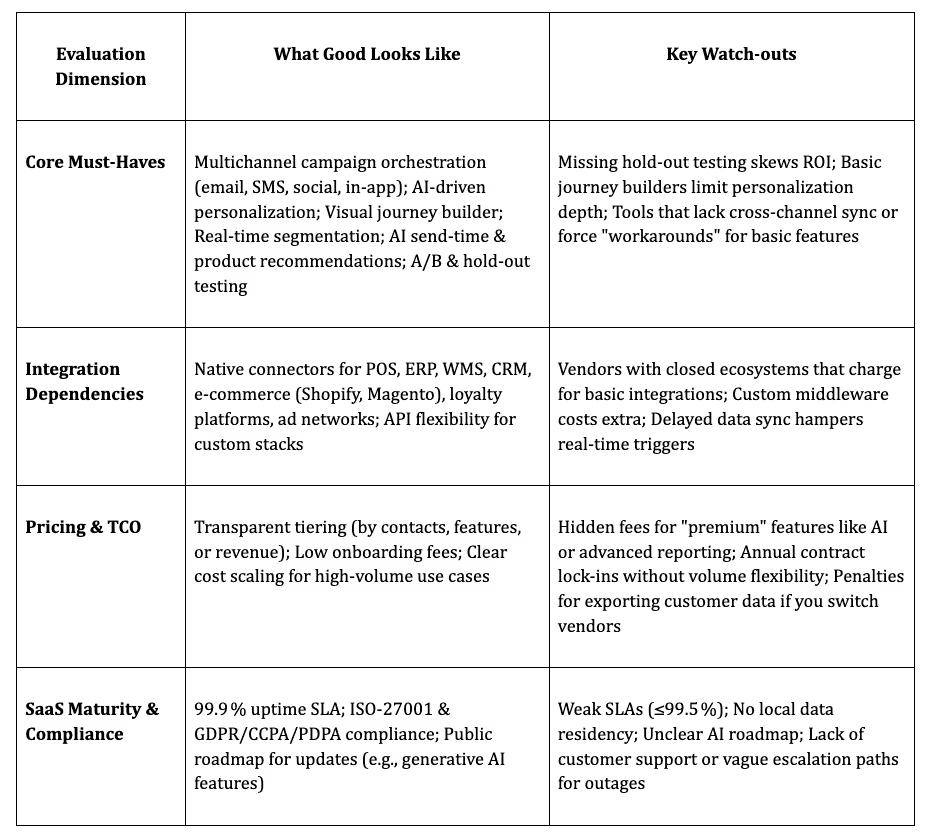
Vendor Check: Klaviyo, Omnisend, ActiveCampaign, MoEngage, WebEngage, CleverTap, Netcore Cloud, Insider, GetResponse, Drip, Constant Contact
The "best" platform isn't the one with the most features- it's the one that aligns with your current needs, matches your scale, integrates seamlessly with your existing tech stack, and can grow with your business without breaking your budget. Take time to run proof-of-concept tests with your actual data before committing to any long-term contracts.
Vendor Questions That Reveal the Truth
Mid-sized retail teams need platforms that work seamlessly with existing systems, scale with growing complexity, and won't trap them in hidden fees or restrictive data policies. The right vendor will welcome tough questions, so don't hesitate to ask them.
Here are the critical questions that separate strong vendors from weak ones:
Technical Integration & Data
- Which POS, ERP, and e-commerce platforms do you support natively?
- How do you handle real-time data sync between our online and offline channels?
- What happens when a customer browses online but purchases in-store—can you track that journey?
- How do we export all customer profiles and event data if we decide to switch platforms?
Implementation & Support
- Do you have a proven rollout process for lean marketing teams (under 5 people)?
- Can you walk us through an implementation timeline for a brand of our size and complexity?
- What's your uptime SLA, and how do you handle service disruptions?
Compliance & Pricing
- What built-in safeguards ensure GDPR, PDPA, and CCPA compliance across all channels?
- Are SMS and WhatsApp messages billed separately or included in your base pricing?
- What are the potential hidden costs we should budget for in year one?
Personalization & AI Capabilities
- Can you demonstrate personalization that goes beyond basic demographic segmentation?
- What's your 12-month roadmap for AI-driven features like predictive customer lifetime value?
- Can you show us a customer journey built using our actual data structure?
Your Next Steps
Before committing to any platform, take these essential steps:
- Audit your current setup: Map all customer touchpoints and identify manual processes that need automation
- Start with a pilot: Choose one high-impact journey (like cart abandonment or post-purchase upsells) to test thoroughly
- Demand a real trial: Insist on a 14-day proof-of-concept using your actual customer data, not demo data
The platform that handles these questions confidently and demonstrates real value with your data is likely the right choice. Don’t chase the “best” platform—choose the one that moves the needle on execution and customer experience.
One Last Piece of Advice
If your marketing team is still managing campaigns through spreadsheets and sending generic promotions to your entire database, marketing automation isn’t a nice-to-have—it’s the foundational operating system for competitive customer engagement. Choose a platform that demonstrates measurable incremental growth, not just impressive dashboards. Your customers and your bottom line will thank you.
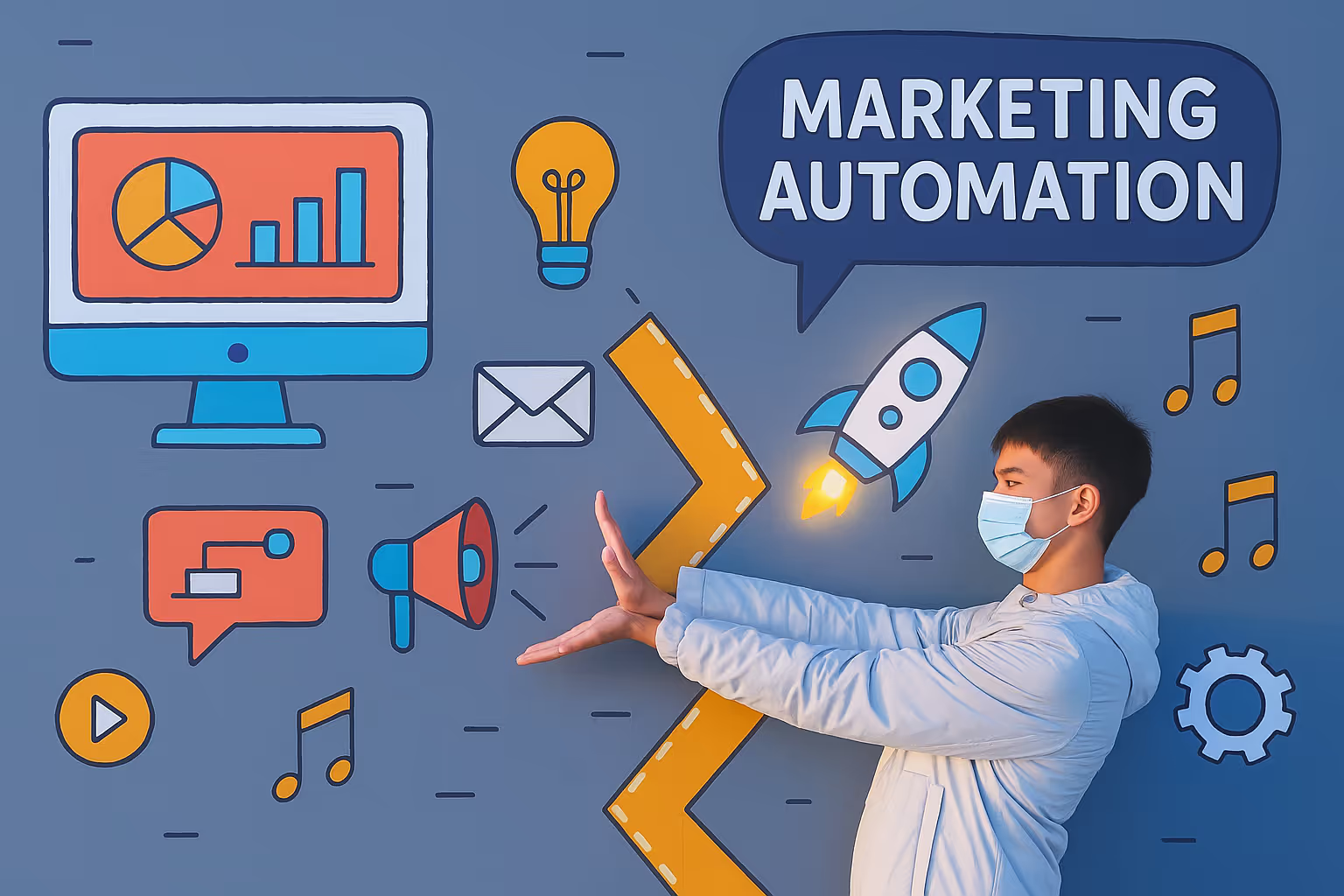

.avif)

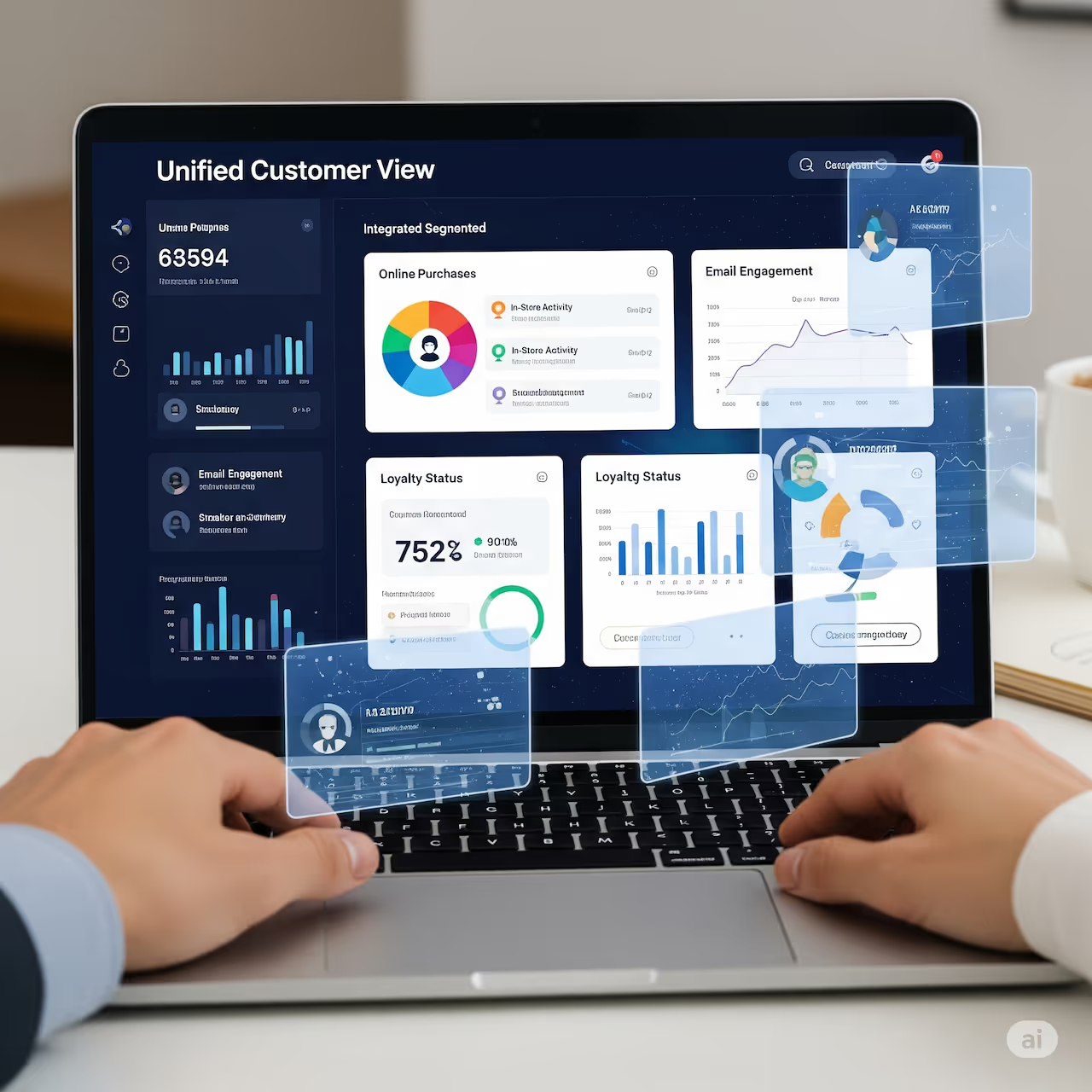
.avif)